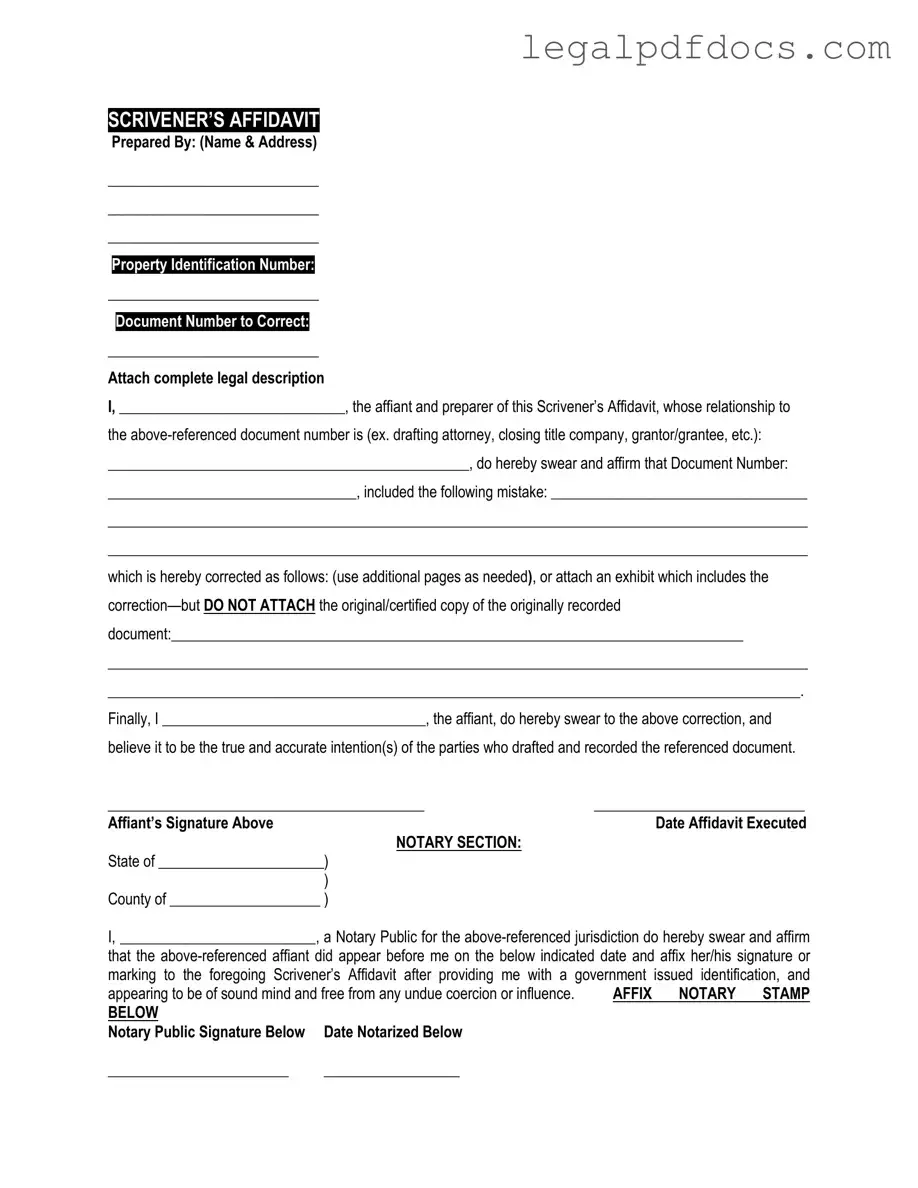The Scrivener's Affidavit form serves as an essential tool in various legal and administrative processes, particularly when it comes to the execution of documents and the verification of signatures. This form is often utilized by individuals who have prepared legal documents but require a sworn statement affirming their authenticity or the accuracy of the information contained within those documents. Key components typically include the affiant's name, details about the document being affirmed, and a declaration that the affiant is a scrivener—someone who has drafted the document but is not a party to the underlying agreement. In addition, the form usually necessitates a notary public's signature, ensuring that the affidavit has been properly executed and that the information provided is reliable. By providing a clear and concise account of the circumstances surrounding the creation of the document, the Scrivener's Affidavit helps to bolster its credibility and can play a pivotal role in legal proceedings, property transactions, and other formal matters where the integrity of documentation is paramount.
